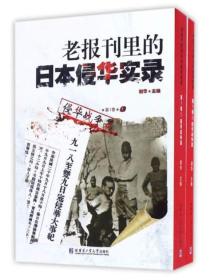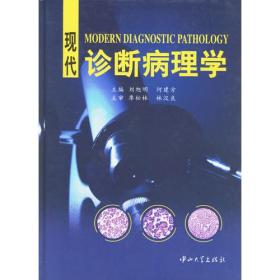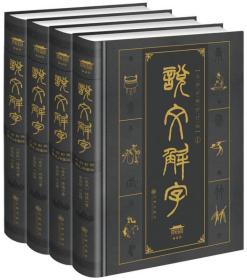
中国文化之旅
中国文化之路
¥ 12.5 2.5折 ¥ 50 全新
仅1件
北京房山
认证卖家担保交易快速发货售后保障
作者罗学锋;纪亚品
出版社中国农业科学技术出版社
出版时间2018-05
版次1
装帧其他
货号11.30-2
上书时间2024-12-01
- 最新上架
商品详情
- 品相描述:全新
- 商品描述
- E11-23
图书标准信息
- 作者 罗学锋;纪亚品
- 出版社 中国农业科学技术出版社
- 出版时间 2018-05
- 版次 1
- ISBN 9787511635730
- 定价 50.00元
- 装帧 其他
- 开本 16开
- 纸张 胶版纸
- 页数 262页
- 字数 312千字
- 【内容简介】
- 全册共计分为地理、饮食、节假日、历史四个部分计19单元,每个单元结构如下:*部分主要是地理部分,讲述中国地理中的自然文化、风景以及美学意义,激发学生对祖国大好河山的自豪感以及如何讲好祖国山水的基本能力。第二部分主要是中国美食文化简介。通过具有中国特色的美食文化展示,凸显具有地方特色、民族特色的饮食文化,更好的讲述中国的悠久历史文化内涵。更好的向世人展示中国。民以食为天。第三部分主要是中国传统文化中的新年。中国传统文化中的新年对于整个世界的影响以及传达的民族文化内涵。进一步阐释5000年连续的文明背后的原因。第四部分是中国历史文化部分,讲好中国的故事是关键,中国的故事中的历史文化秉承整个民族文化,是民族文化的脊梁。从寻根问祖、丝绸之路、大唐盛世、两宋文化科技、大明王朝航海时代、以及大清帝国、新中国的成立,一步步走向辉煌的历史,客观、真实的诠释了整个民族的历史文化,在兴衰的进程中见证了辉煌的过去以及展望民族复兴的未来。在教材编写过程中,我们得到了许多同仁的大力支持以及建议,再次表示感谢。由于编写组成员知识水平有限以及对材料的理解度和感知力不同,因此存在的问题以及错误在所难免,希望读者予以指正。
- 【目录】
-
(Contents)
Part IGeography
Chapter OneHeart of the Dragon
1.1The last hidden world——China
1.2Rice and swallow in the warm subtropical south of China
1.3The Karst and the caves
1.4The endangering wildlife of the South and the protection
1.5A review of the South of China
Chapter TwoShangri?la
2.1Introduction
2.2The different ethnic groups and the dwelling animals
2.2.1The Dai people and the Water Splashing Festival
2.2.2The Lisu people and the Yunnan snub?nosed monkey
2.2.3The Chinese red panda
2.2.4Abundant plants and the Plant Hunters
2.2.5Various animals and the bamboo
Chapter ThreeTibet
3.1Introduction of Tibet
3.2Tibetan religion
3.3Various wild creatures
3.3.1The hot spring snake
3.3.2The jumping spider
3.3.3Chiru
3.3.4Yak
3.3.5Yatsa gunbu
3.3.6The spiritual culture and conservation
3.3.7The black?necked crane
3.3.8The pika
3.3.9Threats to the wild animals
3.4Tibet?s most secret corner
3.4.1The Yarlung gorge
3.4.2Mount Kailash
3.4.3Tibet?s glaciers
Chapter FourBeyond the Great Wall
4.1Introduction of the Great Wall
4.2The Northeast China
4.2.1The Black Dragon River and the Hezhe people
4.2.2Wild animals in the south of the Black Dragon River
4.2.3Changbaishan
4.3The Mongolian Steppe
4.3.1The grasslands
4.3.2The Mongolian and horses
4.3.3Bayanbulak
4.3.4Swans
4.3.5Gazelles
4.3.6Jiayuguan
4.4The Taklimakan
4.4.1The silk and the Silk Road
4.4.2Sea of Death
4.4.3Turpan oasis
4.4.4Kashgar
4.5Tian Shan
4.5.1Kazakhs
4.6The Junggar Basin
4.6.1Hamsters
4.6.2Wild horses
4.6.3Golden eagle and hunters
4.7Harbin
Chapter FiveLand of the Panda
5.1Introduction
5.2Exploration journey
5.2.1Ideas about relations between man and nature in Beijing
5.2.2Influence of the Loess Plateau and the Yellow river on
Chinese people
5.2.3Relations between man and wild animals in Qinling
Mountains
5.2.4The relationship between the Chinese people and their
environment
5.3Hope for human living in harmony with nature in China
Chapter SixTides of Change
6.1Introduction
6.2Journey of cranes from north of China to the south
6.2.1The red?crowned cranes in northern China?s Haling Nature
Reserve
6.2.2Friendship between swans and human in Mount Jinping
6.2.3Snakes and birds in Shedao Island
6.2.4Fishing and jellyfish in Chuwang Harbour
6.2.5Milu in Jiangsu Province
6.2.6Birds in Yancheng
6.2.7Living creatures in the Yangtze River
6.2.8From hunters to conservationist in Chongming Island
6.2.9Bigger invasion to birds and river life in Shanghai
6.2.10Tea planting in Tami Mountains
6.2.11Migrating birds in Hongkong harbour
6.2.12Chinese white dolphins in Landau Island
6.2.13Carol and carol reefs in the South China Sea
6.2.14The wild macaques in the Dongzhaigang Mangrove
Reserve
6.3The path chosen for Chinese economic development and
environmental protection
Part IIChina——A Culinary Adventure
Chapter SevenBeijing
7.1Introduction of the journey
7.2City dishes
7.2.1Noodle
7.2.2Stir?fry of aubergines with mild green chillies
7.2.3Zha Jiang Mian
7.3Wangfujing Night Market
7.4Jingshan Park and Ken?s growing up memory
7.5Hutong?s Peking Duck
7.6Local breakfast?Baozi with Intestine Soup
7.7Dumpling
7.7.1Making dumplings
7.7.2Cooking dumplings
7.8Ching?s growing up memory
7.9Countryside meals
7.9.1Stir?fry of pork and wild mushrooms
7.9.2Spring onion flatbread
7.9.3Corn porridge
7.10Ken?s Meeting Hongying
7.10.1Roasted and fried Chicken wing and Stir?fried cabbage
7.11Meeting Chef Dadong
7.11.1Sweet and sour duck balls
7.11.2Twice cooked crispy duck and apple salad
7.11.3Duck minced up with lettuce cups
Chapter EightChengdu
8.1Chengdu?s spice market
8.2Fly restaurant Ming Ting
8.2.1Ma Po Dofu
8.3Visiting Jenny?s grandparents? house
8.3.1Pickles making
8.3.2Stir?fried rabbit meat
8.3.3Boiled fish dish
8.3.4Stir?fried crispy fragrant Sichuan sausage
8.4Street food
8.4.1Baozi bun
8.5Fondue
8.6Visiting pig farmers?Mr. and Mrs.Peng
8.6.1Pig?s ear salad
8.6.2Twice?cooked pork
8.7Visiting factory of Pixian bean paste
8.8People? Park
8.9Meeting Chef Li?Cantonese Executive Chef
8.9.1Crispy Aromatic Duck
8.10Panda
8.11Chef Yu Bo food art
8.11.1Guaiwei cucumber
Chapter NineYunnan
9.1Yunnan cuisine
9.1.1Dai Minority cuisine
9.1.2Bulang minority cuisine
9.1.3Stir fried rice?noodles with broad beans and bamboo
shoots
9.2Kashgar in Xinjiang Uyghurs Autonomous Region
9.2.1Naan Bread
9.2.2Roasted lamb
9.2.3Uyghur dish polo
9.2.4Laghman
9.2.5Chuchura
Chapter TenGuangdong
10.1Cantonese cuisine
10.1.1Huangsha market
10.1.2Steamed Cantonese scallops
10.1.3Stir?fried razor clams
10.1.4Dim sum
10.1.5Yum cha
10.1.6Bao Hua road market
10.1.7Sweet and sour pork
10.1.8Black chicken soup
10.1.9Cantonese opera
10.2Ching?s Homecoming to Taiwan
10.2.1Zongzi
10.2.2Drunken prawns
10.2.3Stir?fried fresh clams
10.3Ken?s homecoming to Kaiping City
10.3.1Sweet and sour goose
10.3.2Bitter melon with black bean sauce
10.4Meeting at Hong Kong
Part IIITraditional Festival
Chapter ElevenReturning Home
11.1Mass migration
11.2Harbin
11.3Ice festival
11.4Light display
Chapter TwelveReunion
12.1Coming home
12.2Beijing
12.3Celebration
12.4Bell
Chapter ThirteenFestivity
13.1Getting together
13.2Hong Kong
13.3Fish market
13.4Dragon dance
13.5Temple fair
13.6Night parade and fireworks
Part IVHistory
Chapter FourteenAncestors
14.1The Qingming Festival
14.2The plain of the Yellow River
14.3The legend of King Yu
14.4The Shang Dynasty
14.5The Mound of Shang
14.6Taoism
14.7The first golden age of Chinese philosophy
14.8The First Emperor?Qin Shihuang
Chapter FifteenTang Dynasty
15.1The Silk Road
15.2The Buddha
15.3Christianity
15.4The Crisis
Chapter SixteenSong Dynasty
16.1Introduction
16.2The Golden Age
16.2.1Kaifeng
16.2.2The Festival of the River Kaifeng
16.2.3Cuisine
16.2.4Printing
16.2.5Civic values
16.2.6Su Song
16.2.7Religion
16.2.8Kick?ball
16.2.9Education
16.2.10Li Qingzhao
16.2.11Wang An?shi
16.3Paradise lost
16.4New paradise built
16.4.1Hangzhou
16.4.2Zhu Xi
16.5End of the Song Dynasty
Chapter SeventeenMing Dynasty
17.1Nanjing
17.2Desire for control
17.3The Great Ming Code
17.4Yongle Emperor
17.5New capital
17.6Trade and voyage
17.7The renovation of the Great Wall
17.8Lacquer making
17.9Cotton and silk industry
17.10Gardens in Suzhou
17.11Tourism
17.12Matteo Ricci
17.13Adoption of Solar calendar
17.14Seclusion from the world
17.15Crisis
17.16End of Ming Dynasty
Chapter EighteenQing Dynasty
18.1The end of Ming Dynasty and the birth of Qing Dynasty
18.2The rule under Kangxi
18.3Qing?s policy towards the ethnic minorities and its civilization
18.4Ruling in the Chinese tradition and stressing agriculture
18.5Kangxi?s stress on culture and the Bondsman Cao Yin
18.6Yangzhou?s rise with Manchu patronage
18.7The salt merchant and philanthropist——Bao Zhidao
18.8The opera and drama supported by rich people
18.9A flourishing culture and popular fiction
18.10Old Kangxi?s advice to his son
18.11Yongzheng?s trials of Cao Yin and Cao Xueqin?s The Red
Mansion
18.12The rise of the British and the possible in fluence on the course
of Chinese history
18.13Opium to China and China was at risk
18.14Qianlong?s refusal to do business with Britain became a reason
of the Opium War
18.15Lin Zexu?s destruction of the British opium
18.16The first Opium War and China lost Hong Kong
Chapter NineteenThe Age of Revolution
19.1The Taiping Revolution
19.1.1Religious and political Background
19.1.2Hong?s revolutionary and religious ideas
19.1.3The spread of the Taiping Ideology
19.1.4The Taiping State
19.1.5The end of Taiping
19.2The boxer rising
19.2.1The rise of political forces after the Second Opium War
19.2.2The boxer rebellion
19.2.3The inevitable revolution recorded in Liu Dapeng?s
dairy
19.2.4The end of feudal dynasties
19.3The May 4th Movement
19.3.1Student demonstration and the voice from Lu Xun
19.3.2The founding of Chinese Communist Party
19.4The birth of the People?s Republic of China
19.4.1Westernization in cities
19.4.2The War between the Nationalist Government and the
Communists
19.4.3The united front between Nationalists and Communists
towards Japanese
19.4.4The founding of the People?s Republic of China after the
Civil War
19.4.5Maoism
19.4.6Deng?s “Opening up” and China today
参考文献(References)
点击展开
点击收起
— 没有更多了 —












以下为对购买帮助不大的评价